Beakuency welcomes Spencer Fenniman, manager of Hawthorne Valley Farm in Ghent, Columbia County. In the biodynamic farming practiced at Hawthorne Valley, birds, insects, shrubs, cows, people, and all other elements are intertwined and contribute to the overall health of the microcosm that is the farm. Spencer shares observations about the interdependence of all these factors, land management techniques that maintain the balance between them, and efforts to create bird habitat on the farm over the past two decades.
When we invest in local farmers, they can provide public goods beyond healthy food, such as the regeneration of bird species or the restoration of landscapes from which we all benefit. Spencer explains how we can support the Bobolink Project, an initiative that compensates farmers for protecting grassland species in decline, and by joining CSAs, we can also grow our local economies and protect wildlife habitat.
Hawthorne Valley Farm https://farm.hawthornevalley.org/
The Bobolink Project https://www.bobolinkproject.com/
This interview was recorded on March 20th, 2025, and broadcasted on Wave Farm’s WGXC 90.7FM on April 26th, 2025.
Interview Transcript
Mayuko Fujino: Could you briefly introduce yourself?
Spencer Fenniman: Sure. My name is Spencer Fenniman. I'm the farm manager at Hawthorne Valley Farm in Ghent, New York. I've been here since 2012 and been the manager of the farm since 2017. I studied anthropology in college and grew up in the suburbs, began farming as [an] interest to have some connection to the land, to have some awareness of what it meant to produce food, and really looking more for a vocation that involved hand skills. I did a series of apprenticeships, and now 20 years later, that's the way of life.
MF: The practice of farming is called biodynamic farming. Could you tell me what exactly that means and [what] it looks like in practice?
SF: Hawthorne Valley Farm was founded in 1973 as a place to bring students from Waldorf schools to have a farm experience. And out of that grew the farming. And from the onset, biodynamic practice was a part of how we were going to farm. This predated organic farming. And when organic farming became a practice, Hawthorne Valley became an organic farm as well at that point.
Biodynamics is a practice that started just over a hundred years ago, and it is based on the philosophy of the Austrian philosopher Rudolf Steiner, who had a philosophy called Anthroposophy. And the biodynamic approach was kind of born out of this request that a lot of farmers had in the 1920s that they were seeking a remedy for their farms and their produce and their seeds and their animals. And the remedy was that, for decades at that point, synthetic fertilizers were being used. And there was, perceived by these farmers, that there was a lack of vitality in their lands. There's a lack of vitality in their fields, in their seeds and the food, that the nourishment, beyond just the nourishment of food, but nourishment of the whole land was ebbing.
There was a question as to “how can we restore the vitality of our farms and our practice?” And this is not dissimilar to the conversation happening 100 years later that's being called regenerative agriculture. So Rudolf Steiner kind of created in a series of lectures a number of prescriptions that he felt would help to enhance the vitality of farms. And a lot of that took a step back and said, well, we really need to look at what is influencing the growth and development of soil, of plants. And that the focus had become way too materialistic. The focus had become way too much on, you need to provide phosphorus, you need to provide these individual chemicals.
We really need to step back from the material focus and look a little bit more on totality and look a little bit more on kind of a mutuality and the interdependence of so many different factors. And those, when he looked a little bit more to the distant past, where he felt there was a more instinctual awareness of the interdependence of things. And that could include the interdependence of the planetary movements and the movements of the stars and their impact on plant growth and development, on how trees interact with the surrounding landscape, and the effect that what is happening in the soil around a tree and how that impacts the growth and development of plants adjacent to that.
And the other thing was that I think there was this real recognition, and I took the time to pull a direct quote, because I do think it sums up a lot of that approach, is: we must approach everything in farming with the conviction that in order for the whole thing to work, we need to pour life and astrality into everything around us and pouring that life, creating that personal connection and really deepening that relationship that we have.
A lot of the farming practices that emerged in biodynamics are not dissimilar to what we think of as modern organic farming practices. The use of cover crops, crop rotation, a real emphasis on compost. But beyond that, there was this idea that we could create a unique farm individuality by creating an organism. And each farm could create all the conditions for the farm's success within itself. So it would have the proper number of animals for the proper amount of crops, and that those would all balance and could deepen those interactions between the animals and the crops produced.
So I think what is still at play in biodynamics 100 years later is this idea that there's just this really wide lens so that we have this opportunity to see and be aware that there's a lot of different components to what makes a plant grow and develop and what makes a farm produce food that's nourishing, healthy. And you know, we can, as humans, we can try as best as we can to be aware of all those things, but that takes practice as well.
MF: Because this is a bird radio program, I would also like to ask about birds. How do they take part in the farming cycle, if they do?
SF: Yeah. So, you know, I think I just want to step back and give a little layout of our farm. So we farm approximately 900 acres here in Columbia County. And on our farm, about 125 acres is cropland, either produce or we're growing some feed grain for animals. Most of that is in any given year where it's about 50 acres actually cropped. 300 acres is grazed and 300 acres is in permanent hayland. The balance of that — so about 200 or so acres is in woodland and wildlife habitat. So whether that's fenced off creek corridors, ponds, swamps, kind of adjacent hedgerows, those are kind of non agricultural but supporting agricultural area. On that we manage about 50 acres of our pasture is transitional scrub pastures.
This came about with our interaction with the Hawthorne Valley Farmscape Ecology Program. Conrad and Claudia Vispo of the Farmscape Ecology Program really encouraged the farm, about 20 years ago, to start looking at how the farm could promote wildlife habitat as well. So with the shrub pasture, some of that was removing some of our less productive farm acreage from intensive management and allowing some natural re-vegetation in a balanced way. Shrub is obviously a highly sought after species or habitat for a number of bird species. With the grassland we also manage about 100 acres of our hay ground for grassland bird habitat, primarily Bobolinks, but also Savannah sparrows and meadowlarks. That is basically, for the grassland birds, that's not taking a hay cut until mid July at the earliest, often August. That's a practice that replicated pre-mechanical harvest of hay, that was roughly around the time that hay harvest was happening, which really suited the breeding cycle of the grassland birds. Now with modern technology, we can harvest earlier, we can manage more intensively. A lot of fields no longer are suitable habitat and the Bobolink in particular and the Eastern meadowlark are species that are dramatically in decline.
So, for us, I think, out of biodynamic practice, there's this idea that it's really quite important to manage, for these non agricultural considerations on a farm, that insect life, bird life, you know, we need to be aware of that. We need to create conditions by which they can thrive because they are part of our farm and they're actually contributing to the overall health of that farm organism that I mentioned. Those interactions that can happen in nature, that kind of interconnectedness is something that we need to balance. So it's like, well, how can we build a farming system that allows for us to take late hay on a field. For one, we have the privilege of having access to probably more land than we might necessarily need. We're not in a very high volume agricultural area. There are not very many farms, but there's quite a bit of farmland. So we have a little bit of extra acreage that we can allow for management outside of that.
In our dairy barns, we use a system called a deep bedded pack. And that's where in the winter when the cows are off pasture, we have what's called a bedded pack, where we bed them down with hay or straw every day to create a warm, comfortable place to lie down. The hay quality that we get off the fields that are harvested for bird habitat is not necessarily prime for consumption. The animals wouldn't necessarily thrive eating that hay. But it does really well as a bedding. Organic rules require that organic bedding is used. So most of that Bobolink hay is used as our bedding, which then on our farm becomes the basis of our fertility because that becomes the compost that drives a lot of the farm productivity.
So, you know, we had this goal which was to promote bird habitat. And maybe it took a while, but we did find a way in which how that could really nest into a farming system in a way that made sense. Bobolinks are a long distance migrant, we only have so much control on the acreage that we manage for them. But the best that we can do is allow for a space for them to breed.
So, again, we can't manage for everything everywhere on our farm. We wouldn't necessarily be able to produce food if we were to manage every space for the maximum return of biodiversity or nature. So there is a bit of a compromise. But what we can do is try to create as much space around the edges of the farm where some of those possibilities could happen.
I think humans from a holistic soul point of view are diminished by the loss of any time a species is lost. I think as a whole humanity is diminished. That as we're going through this mass extinction. And whether you could materially draw a line between a bird or an insect in somewhere across the globe, I really do think that there's this interconnectedness. Maybe that could be better understood as this idea of Gaia or this whole global being that we're a part of. But when we look at our farm and consider, well, our farm is that being that has all these different elements, a lot that are ones that we influence and a lot that are ones that we don't influence, that's kind of that health and quality and interaction component.
I think that as we've become more engaged with modern technology, we've lost a little bit of instinctual awareness, relationship to nature. But also, if you look at this place, this farmland where we are 400 years ago, this was predominantly forested. And so in a way, this soil lived for millennia in the context of forest. And we've imposed this kind of European vision of grassland and grass production and a lot of European species onto this. And while there's still that system has sort of naturalized, I mean, as evidenced by the fact that Bobolinks enjoy this habitat they probably didn't have before land clearing happened, there's still some remnant of forest.
And if you leave a field within 100 years, we're seeing all over this county large scale forest regeneration. So farming with the idea that there needs to be some interaction with forest is, to us, makes sense.
MF: What you said about losing one species is actually hurting us too - it makes me think of when somebody is going under really hard stressful time, and you lose sometimes your hair a little bit in the small part, but when it's happening behind your head, you don't see that and you don't even know that's happening. And so you don't feel like you're being hurt. And that could be a lot of people's experience. You're losing all these things and it's your head, but because you don't see it, it's easy to overlook that stress is happening and it's affecting you. When I lived in urban areas, I’d heard [of] the word biodiversity, but I hadn't really felt it. Because when you don't know anything is there, you don't see that, even [when] it's in front of you. You can easily not see it and not think about it. And you can just go on living your life like that.
SF: Yeah. I think that while farmers do love machines, we also do spend quite a bit of time outside in quiet times. Whether that's checking stock and checking fencing or producing, you know, harvesting. And in that is a big sonic awareness. And, you know, whether that's with the amphibian call that's happened this week or the first Red-winged Blackbird that returns… or even just, you know, I'm by no means an ornithologist and I'm not sure I could even call myself a birder. But I enjoy, more than anything, hearing and trying to learn new bird calls as I'm out and about and walking and doing farm activity. And it's often not even seeing that. It's just that sonic relationship that you have. And how that exists in an urban context, I can't speak to that. But I do know that that is probably a real appeal for people when they do come [here], leave an urban context, some of that what they hear. And you know, agriculture is a large land manager. There's a lot of land management in agriculture. And I think it's the responsibility of farming to farm for nature and to farm for. And what that means, what that means is farming for bird life, for insect life.
MF: You took part in [the] Bobolink Project. Are you still part of it?
SF: Yeah, we are. So I want to say for the last four years, we've been part of the Massachusetts Audubon’s Bobolink project. I think we're the only New York farm participating.
MF: So you can participate from New York State.
SF: Yes.
MF: Because I wasn't sure what the framework was.
SF: Yeah. And so that project, we have enrolled maybe about a third of the acreage that we do for Bobolinks into that project. And basically it is a payment that we get for managing according to their criteria. And their criteria in this instance is we delay harvest until August 1st, hay harvest. And at that point, you know, by the end of July, we're already seeing these large flocks of Bobolinks. So these are Bobolinks that have already fledged, bred. They congregate in extremely large flocks, because we do manage quite a bit of contiguous acreage. But there's really no concern about the fledgling. And the payment is relatively modest. At a per acre payment, it's $50 an acre is roughly what we've been paid for that.
MF: So it's a program designed to compensate farmers trying to help Bobolink habitat because it could lead to financial loss and some farmers may not be able to take that kind of loss.
SF: It's totally true. You know, setting up a system that expects that farmers are going to operate only from an altruistic sense is not practical. Farms are businesses as well and are really beholden to a lot of pressures we talked about earlier, such as providing cheap food, rising costs, labor that isn't for everybody. And to then on top of that, provide what I think are foundationally public goods, like species regeneration or landscape recovery or things like that, is really unrealistic. There's no other industry that we expect to do those things while continuing to maintain. As it's a public good, I think it's an opportunity for public money to go towards that. That could influence some of those decisions that we haven't really moved in that direction. And it seems we're moving way in the opposite direction right now in this country.
MF: Right. So Bobolink project, they're non profit.
SF: That's non profit.
MF: So they're getting grants and donations.
SF: That's outside government. It's not like a federal government program that is paying farmers to do that practice.
MF: Okay. So hopefully they can continue.
SF: Yeah, we'll see. I mean, I think it's great to have that support, to be able to do what I think is a meaningful effort to maintain what's a seriously threatened species. And you know, Bobolinks just bring so much. Again, any seasonal migrant, it's really wonderful when they arrive, the Bobolink, the call, the appearance… It's really a wonderful thing to see a field full of Bobolinks. And any way in which more farmers could be incentivized to promote Bobolink habitat, I think is really something we need to be looking at as a society.
MF: I'm looking forward to [seeing] the Bobolink project expands.
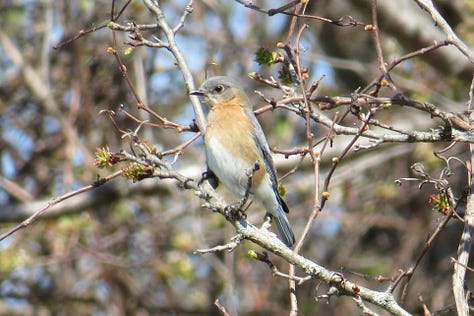
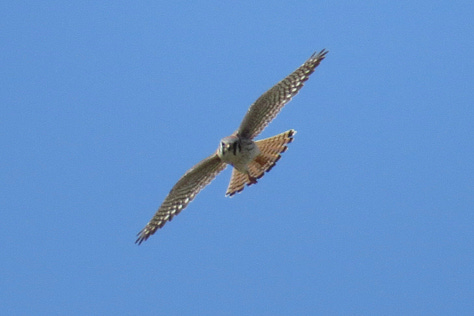

MF: I talked to a local historian about how it used to be, like you said, woodlands all over here and the farmland was cultivated. And so this is a very, in some way, artificial landscape that we are seeing nowadays. And like you said, bobolinks couldn't have been there because there wouldn't have been this much grassland and fields. And so, I guess it's sort of related to the biodynamic farming practice, you can create a positive environment for something, that you can create a new biodiversity from human interaction with nature. [It] is sort of an interesting idea to me.
SF: I think the story of human interaction with nature for the first however many thousands of years involved usually developing a positive relationship to nature. And I think that's still borne out by indigenous practice all over the world, is that human interaction with nature actually created conditions by which certain species could really flourish.
Obviously there were other instances where some species were hunted out, but as humans, we instinctually know how to create the conditions for biodiversity. I don't think that human’s activity is always negative. There are many factors that are influencing negative actions towards biodiversity. And how we correct that as humans is something that I think is really vital in the next 50 to 100 years.
MF: Right. Because, I think, when you don't have the knowledge with such nuances, it's easy for us to feel as if we are the pests and that there's no way we can exist in a positive way. [But] there's really no need for us to think that way.
SF: Well, and even if you think about the grassland birds, that practice is really supported by ruminant livestock. And I think ruminant livestock — as a dairy farmer, we're a little bit defensive about the idea of methane emissions and the idea that removing, you know, if we all went vegan, we would reverse climate change immediately.
But I think that we don't have as much of awareness of the subtle interactions that farming practices can have that involve ruminants, that can be incredibly promotive of a better functioning carbon cycle of more spaces for biodiversity. I mean, even these shrubland habitats that we have, where a number of bird species thrive in them, we manage that with cows. Cows are keeping that from going straight to woods. They keep it partially open. So I think livestock in the right amount, in the right conditions can really be absolutely beneficial towards how we can promote biodiversity and also kind of help reverse climate change.
MF: I think that the CSA program that Hawthorne Valley has, it's actually quite affordable. It's a reasonable price, if you think about how many weeks you get fresh food. And you have the Double Up Food Bucks New York State programs. So my understanding is that you have several options to include people with lower income. But the price wouldn't be something that can beat something you get at Walmart. And so in addition to having those programs that is inclusive, how do you communicate the idea of the value, that you're not being ripped off, this is the actual cost of things. If you think about what other ways you [could be] paying that price just because of the short term cheap price. How do you communicate these ideas around prices?
SF: Yeah, so the CSA model is really wonderful and that has a lot of relation to an idea of Rudolf Steiner's that's idea of associative economics where the farmer and the consumer can engage in some of the background of how can we set prices that meets the consumer's needs, that meets the farmer's needs. I think there's this idea of this, well, double affordability gap that the farmer can't afford to produce the cheap food and it can't be on the farmer to accept a poverty level type existence in order to make sure everybody else has enough to eat. So we do need a price that can allow us to continue to stay in business and a price that can allow us to provide all the benefits that we do beyond just good healthy food.
The CSA provides the farmer with a certain amount of upfront income. A lot of our purchases are made at this time of year, whether it's seeds, whether it's supplies. There's a lot of labor that goes into planting a vegetable crop before you harvest anything. So having some of that upfront money and, you know, the return is really, we still do believe to a certain extent that the CSA is people buying a share in the farm's produce. While they might get 10 items a week for 25 weeks, that's not what they're buying, they're buying a share of what we're producing. So whether that bunch of radishes has six or seven might be dependent on the season, the climate. And over the years, your interaction with the farm can grow and deepen and you can really share in the real benefits of abundance and also partner in the risk, whether it's, you know, the year I think it was maybe 10, 15 years ago, where there was pretty much the Northeast had tomato failure. That's part of the risk of farming.
And for the CSA, we also try to partner with other local farms to make sure that we're providing things that we might not grow as well on our farm, but another farm could grow them as well. And ultimately, with local food and local farms, farms really can be engines of the economy. Farms typically reinvest in themselves. So farmers reinvest in their farms. Part of it is to make farming easier. And dollars spent on local farms really stay in the community, in a way that they might not if you spend a dollar at a supermarket for produce that came from California, you're not necessarily reinvesting in that community. So that money does typically stay and grow and develop and allow the whole community to ultimately, hopefully flourish.
MF: Well, thank you so much. I took so much of your time today and I appreciate it.
Bird-inspired Music of the Month
Crow songs by American singer-songwriter Michael Hurley (RIP) and Bahamian guitarist Joseph Spence, Meadowlark tune by New England folk musician Larry Kaplan, Mourning Dove song by American blues guitarist Peg Leg Howell, and Common blackbird experimental track by Greg Nieuwsma & Antonello Perfetto from their brand new album released this month (Cruel Nature Records).






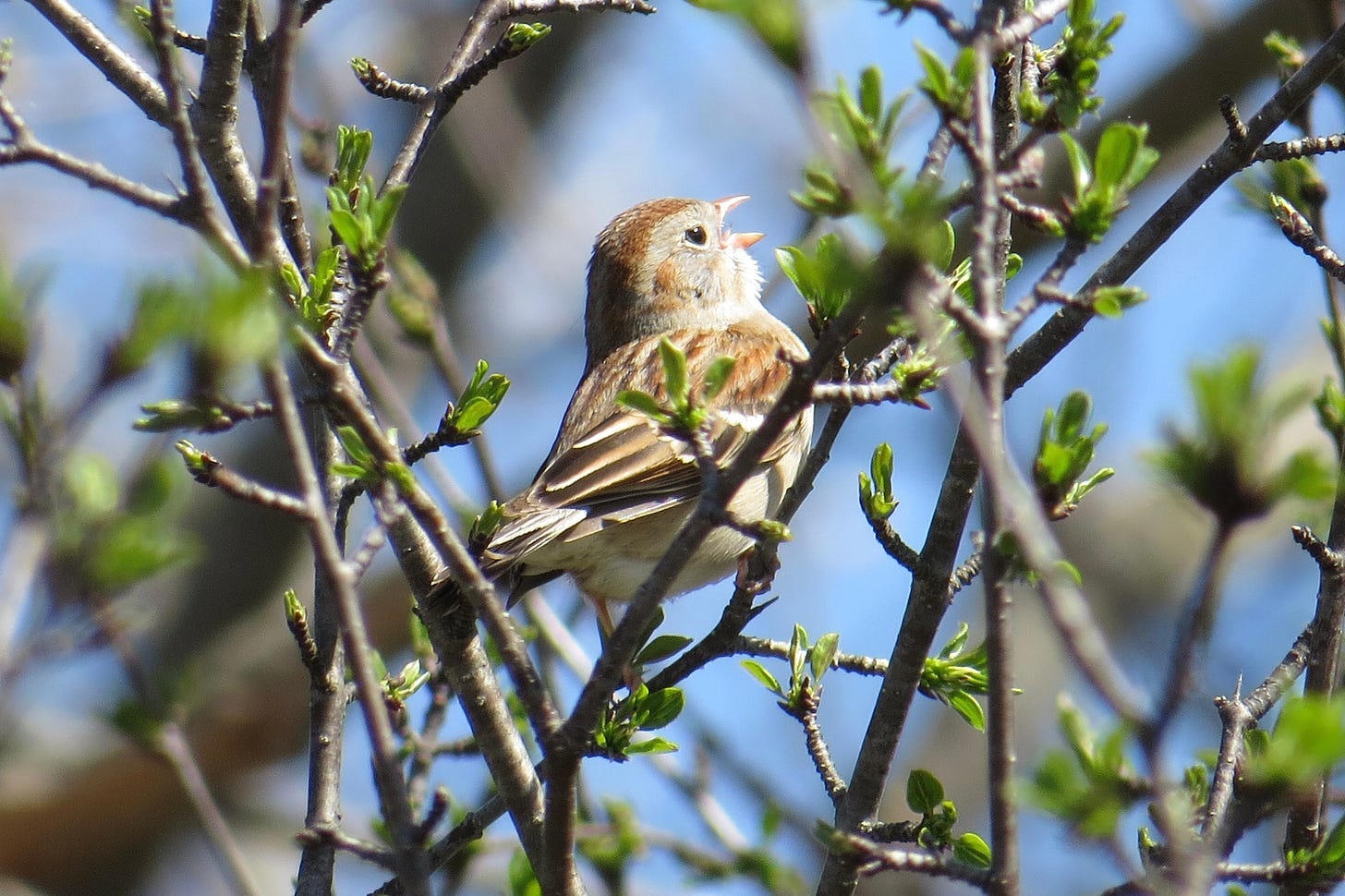
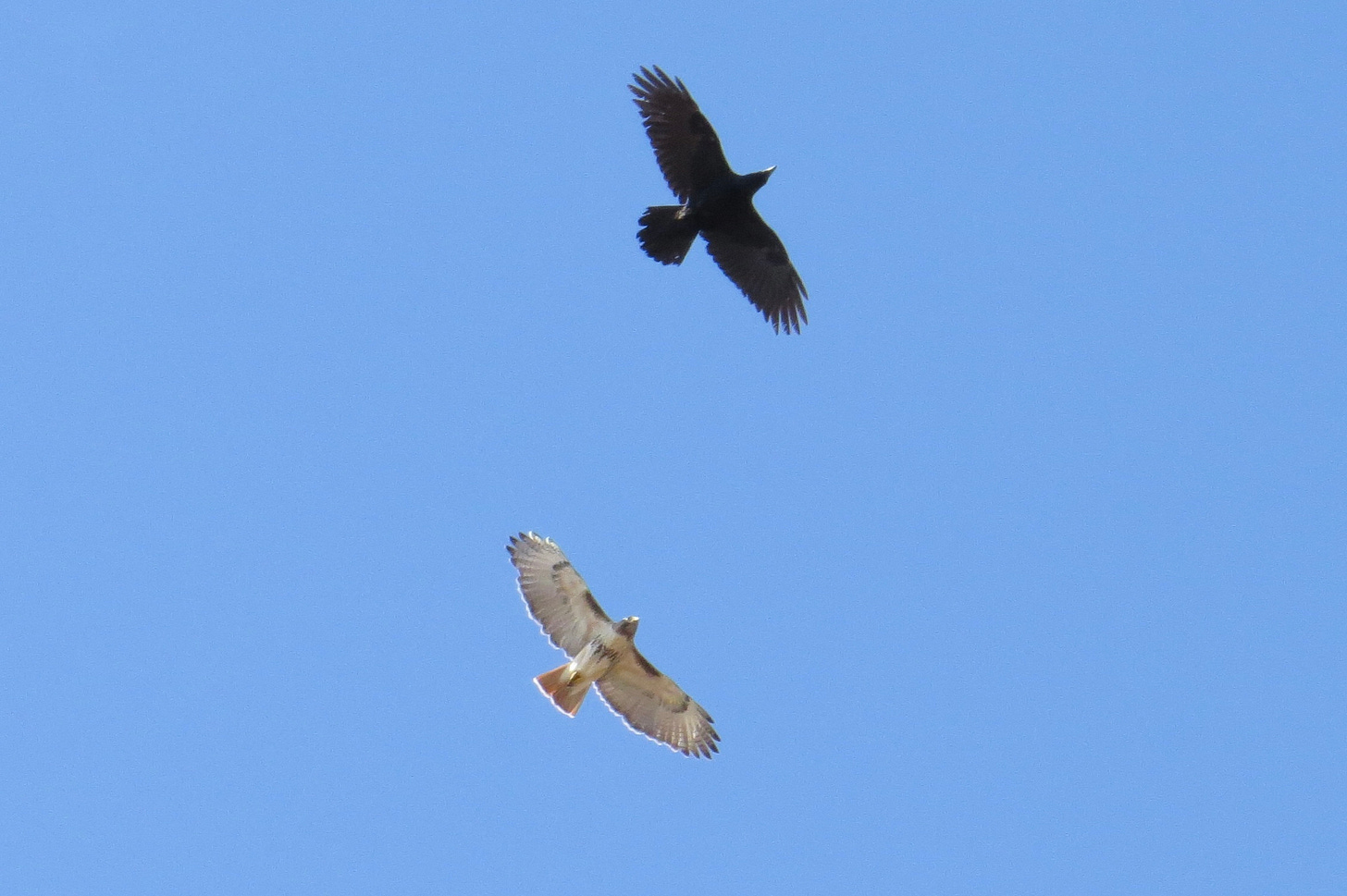

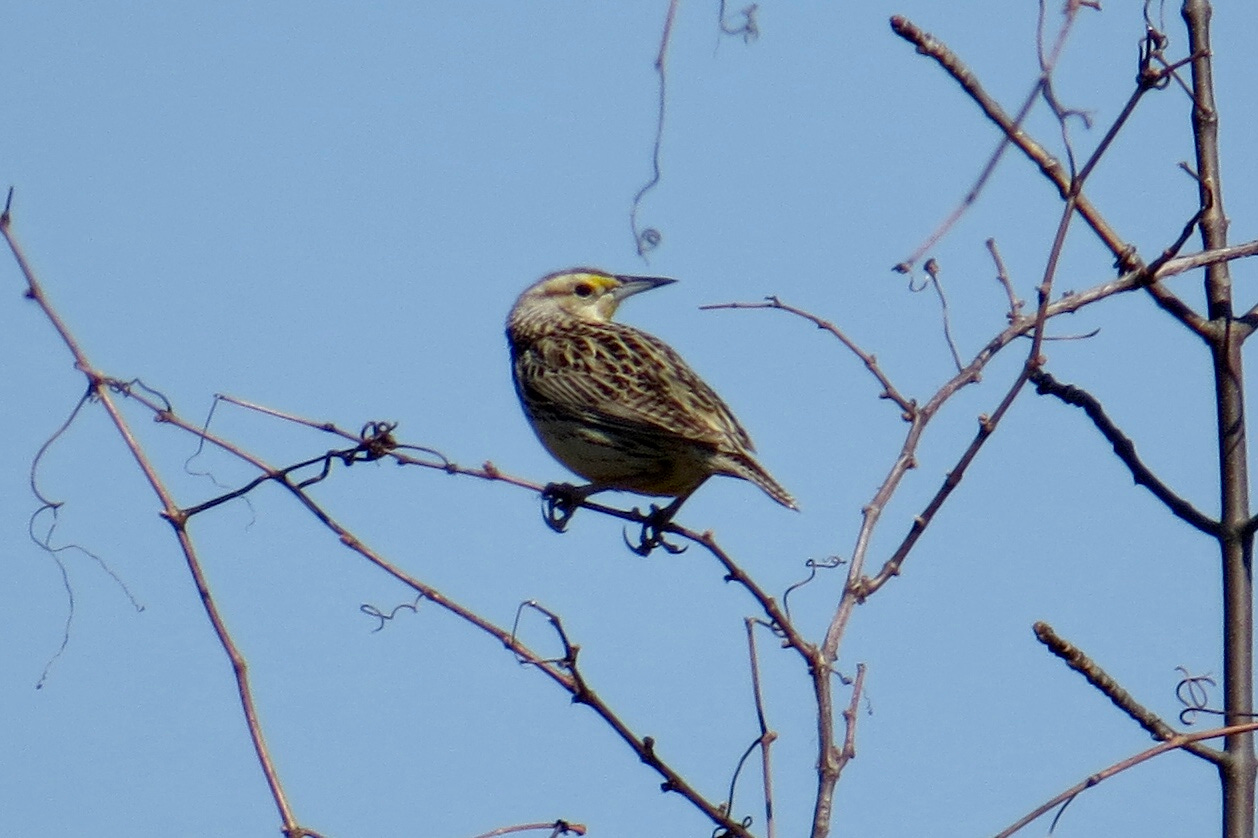
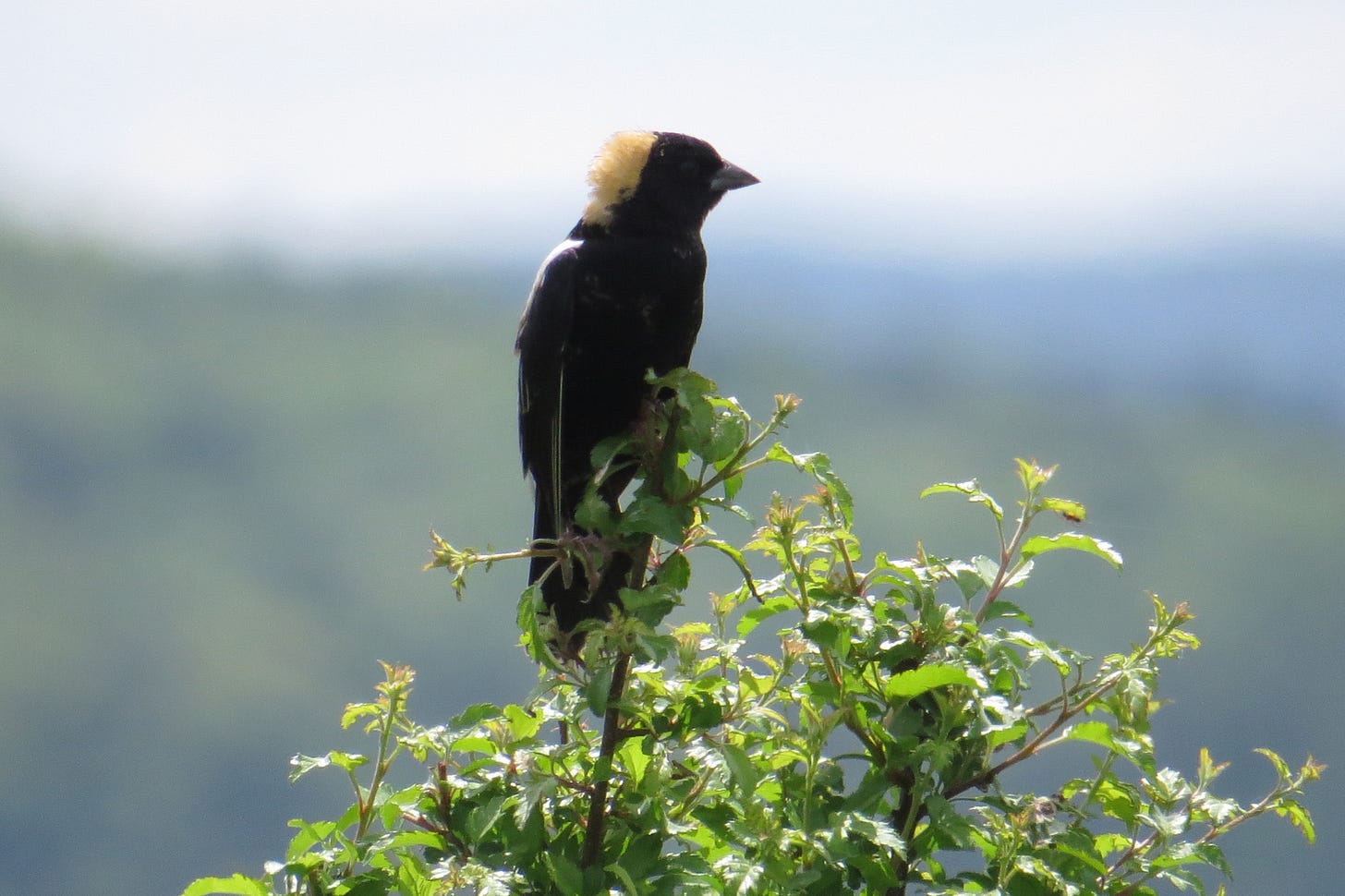

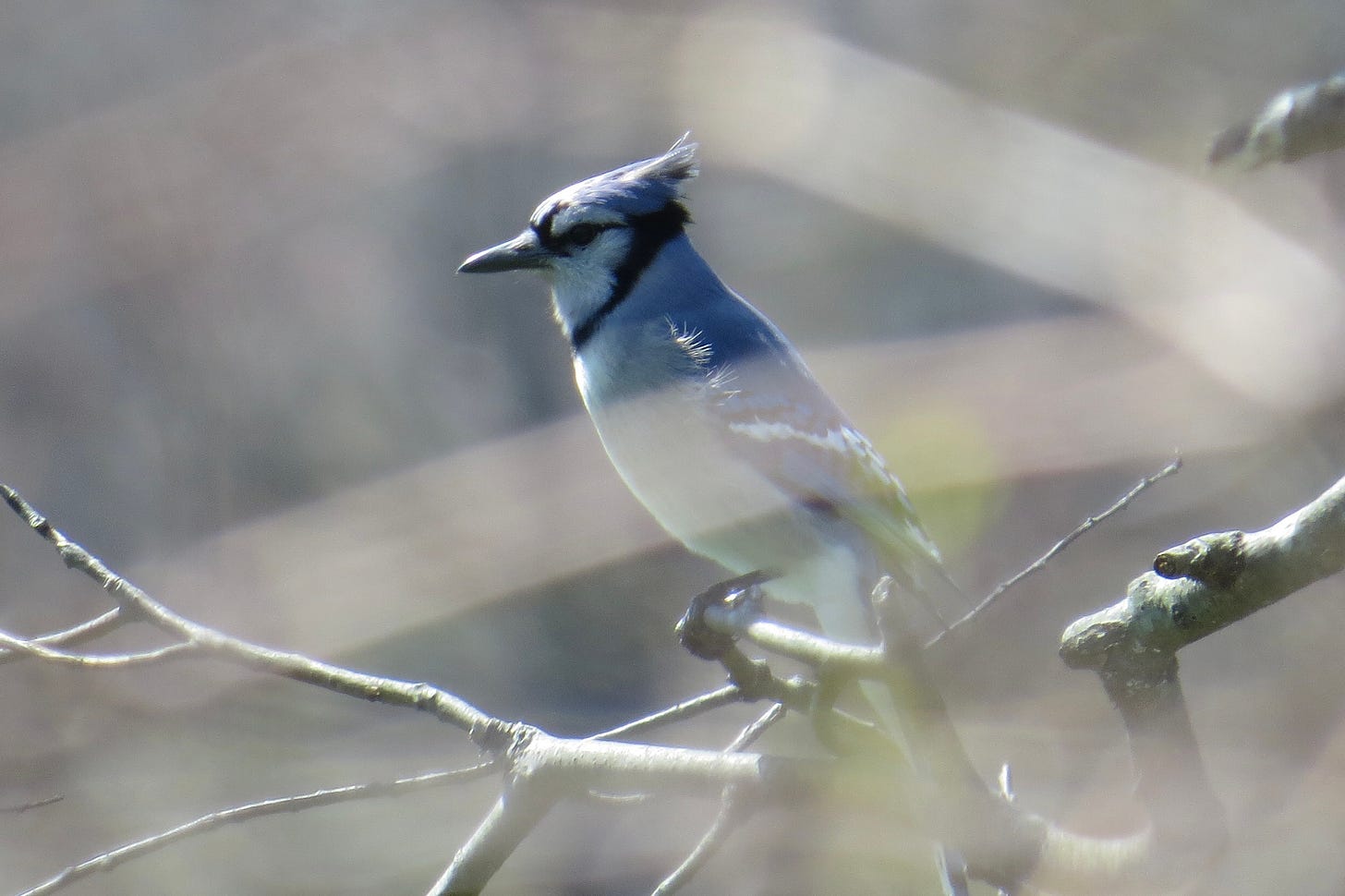




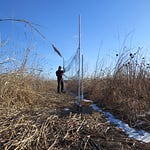



Share this post